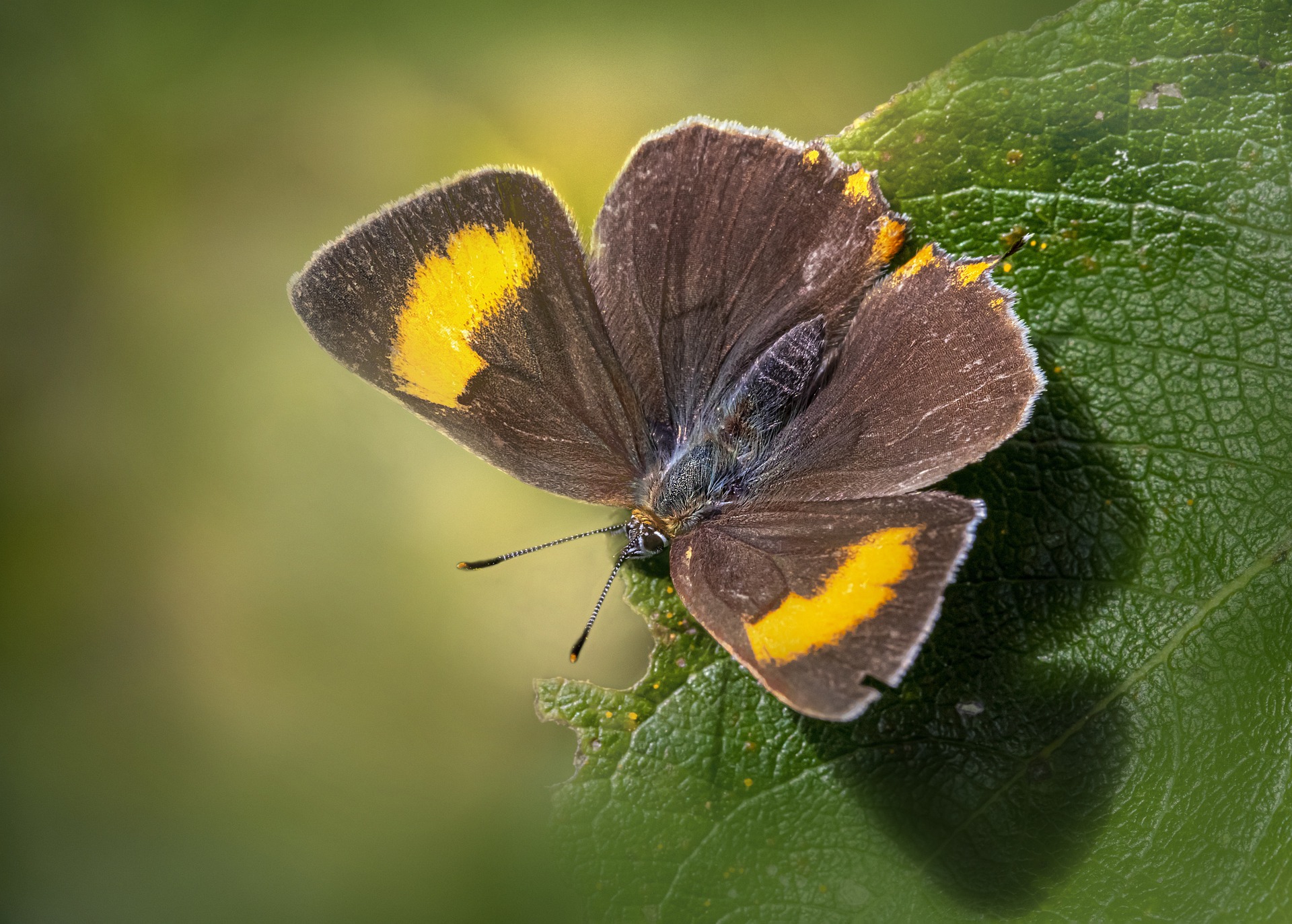The Brown Hairstreak (Thecla betulae) is a beautiful species of butterfly belonging to the family Lycaenidae. Here’s a detailed description:
- Appearance: The Brown Hairstreak is a relatively small butterfly with a wingspan ranging from 35 to 45 millimeters. It has predominantly brown wings with subtle orange markings near the edges. The underside of the wings is typically a paler brown with small black spots and fine white lines. The males often have a more uniform brown coloration, while the females may have additional orange markings and a broader white band on the underside of the hindwings.
- Habitat: Brown Hairstreaks are commonly found in hedgerows, woodland edges, scrublands, and other areas with dense vegetation. They have a preference for habitats with abundant blackthorn (Prunus spinosa) bushes, which serve as larval host plants.
- Range: This butterfly species is native to various parts of Europe, including the British Isles, Scandinavia, Central Europe, and extending into parts of Asia. It is widespread within its range and can be found in suitable habitats across different countries.
- Behavior: Brown Hairstreaks are relatively elusive and spend much of their time perching in vegetation or flying high among the tree canopy. They have a rapid and erratic flight pattern, making them challenging to observe. Adults feed primarily on honeydew secreted by aphids and other insects, as well as on flower nectar when available.
- Life Cycle: The Brown Hairstreak undergoes a complete metamorphosis, progressing through egg, larva (caterpillar), pupa (chrysalis), and adult stages. The caterpillars feed on the leaves of blackthorn bushes, while the adults primarily feed on honeydew and flower nectar.
- Conservation: While the Brown Hairstreak is not considered globally threatened, it may face localized threats due to habitat loss, habitat fragmentation, and changes in land use. Conservation efforts aimed at preserving and restoring hedgerows, woodland edges, and scrublands, as well as maintaining suitable larval host plants, can benefit not only the Brown Hairstreak but also other butterfly species.
The Brown Hairstreak is appreciated by enthusiasts and researchers for its beauty, behavior, and ecological importance as a pollinator. Understanding its habitat requirements and conservation needs is crucial for ensuring its long-term survival.
Views: 14
Subscribe to the newsletter:
